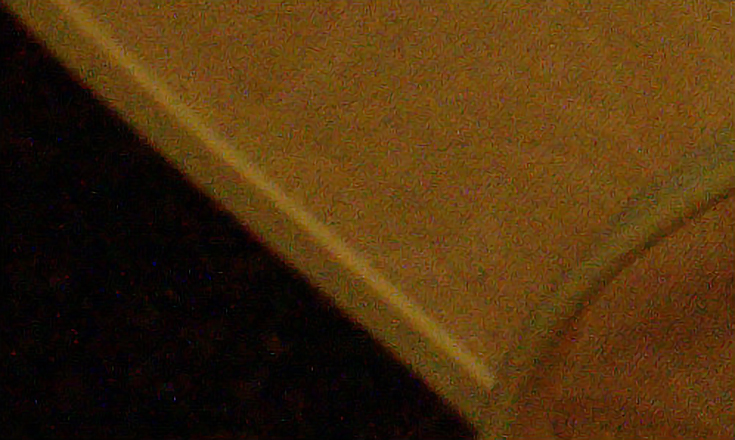In some of my previous articles we’ve looked at aperture and shutter speed. Today, I’ll be going over another one of your camera’s built in controls—ISO.
You’ve seen those ISO numbers—100, 200, 400—but what do they mean? More importantly, how does a better understanding of ISO help you get better photos?
Understanding ISO
Simply put, ISO is a measurement of how sensitive the camera’s sensor (or film) is to light. Setting the ISO higher makes your camera more sensitive to light and switching to a lower ISO makes your camera less sensitive to light.
Your camera will likely have options like: 100, 200, 400, 800, 1600 and 3200. Even if you don’t have a pro DSLR with an extreme number of ISO settings, in all likelihood your digital camera still has a very functional range of ISO sensitivities with which you can shoot.
If you’re new to photography it might be tempting to ignore fiddling with the ISO setting. People pick up a camera, after all, to take pictures not to turn little wheels on their camera or look at funny numbers on the LCD screen.
However, ISO is a very useful tool, so keep reading and your effort will pay off with better pictures.
Using ISO creatively
The ISO setting on your digital camera works alongside the aperture and shutter speed to give you an additional way to control your camera.
Traditionally, film sensitivity (along with shutter and aperture) was one of the 3 ways for the photographer to control the image. With digital cameras, this is still true. Because many new photographers just leave the ISO setting on auto, it’s perhaps even more important now to explain the usefulness of your camera’s built in range of ISO settings.
Generally the lowest setting available on DSLRs and other digital cameras is ISO 100. Each step upwards doubles the sensor’s light sensitivity. If you increase the ISO from 100 to 200, the sensor is twice as responsive to the light coming into the camera. Increase it to 400, and you’ve doubled your sensitivity again.
Using ISO, aperture, and shutter speed together
The ability with digital cameras to change ISO on the fly—and even from one shot to the next—expands your options when shooting, including your options for choosing shutter speed and aperture.
Let’s say you’re in a situation where you’re taking pictures with your ISO at 100, your aperture at f/8, and your shutter speed at 1/60.
By changing your ISO to 200, you’ll need to change your shutter speed to 1/125 to get the same exposure. Change it to 400, and your shutter speed should be 1/250. And so on. Changing your ISO allows you to ALSO change your shutter speed – which might be something you want, or need to do, depending on the subject that you’re shooting.
The same goes for when you want, or need, to change your aperture.
Let’s say you’re taking pictures with an ISO of 100, an aperture of f/4, and a shutter speed of 1/250, and the image is properly exposed. But, you’d really like to try to change your aperture.
Changing your ISO to 200 allows you to change your aperture to f/5.6 while leaving your shutter speed the same. Moving it up to 400 allows you to change your aperture to f/8.
In short, by adjusting your ISO you gain more flexibility in your aperture settings and shutter speeds—and that gives you more artistic and creative choices all around.
Using ISO to get blur-free photos
Certain “bad” lighting tends to draw photographers because it is so evocative. Imagine scenes, commonly enough photographed, like neon cityscapes, people crowded around glowing candles at a birthday party, or a cathedral with amazing light filtering through stained glass windows.
Ambient lighting can help convey the mood of your photos to the viewer, however, capturing these types of dimly lit environments often requires a very slow shutter speed.
If you don’t have a tripod with you, and there are details in the shot that you’d like to prevent from blurring—like people or other moving subjects—one option you have is to increase the ISO sensitivity.
Here are a few more tips to keep your photos from being blurry, too.
Keep in mind that higher ISO sensitivities tend to be noisy, or at least noisier than lower ISO settings.
Typically newer cameras do a better job with this because they have more advanced sensors and built-in noise reduction. Photo editing software can help reduce noise, too, especially chroma noise, which tends to be the most distracting. The downside is that noise reduction CAN blur the fine details in the image more than you may like.
This photo was shot at ISO 3200, using an older DSLR, and as you can see, it has a decent amount of noise.
For new photographers, it’s worth remembering the possibilities offered by the wide range of ISO settings on current digital cameras.
Like aperture and shutter speed, ISO settings on your digital camera allow you to capture more photos in more situations. That means more “good” images, and just as importantly, more creative images, too.
Good luck!
This post may contain affiliate links.

